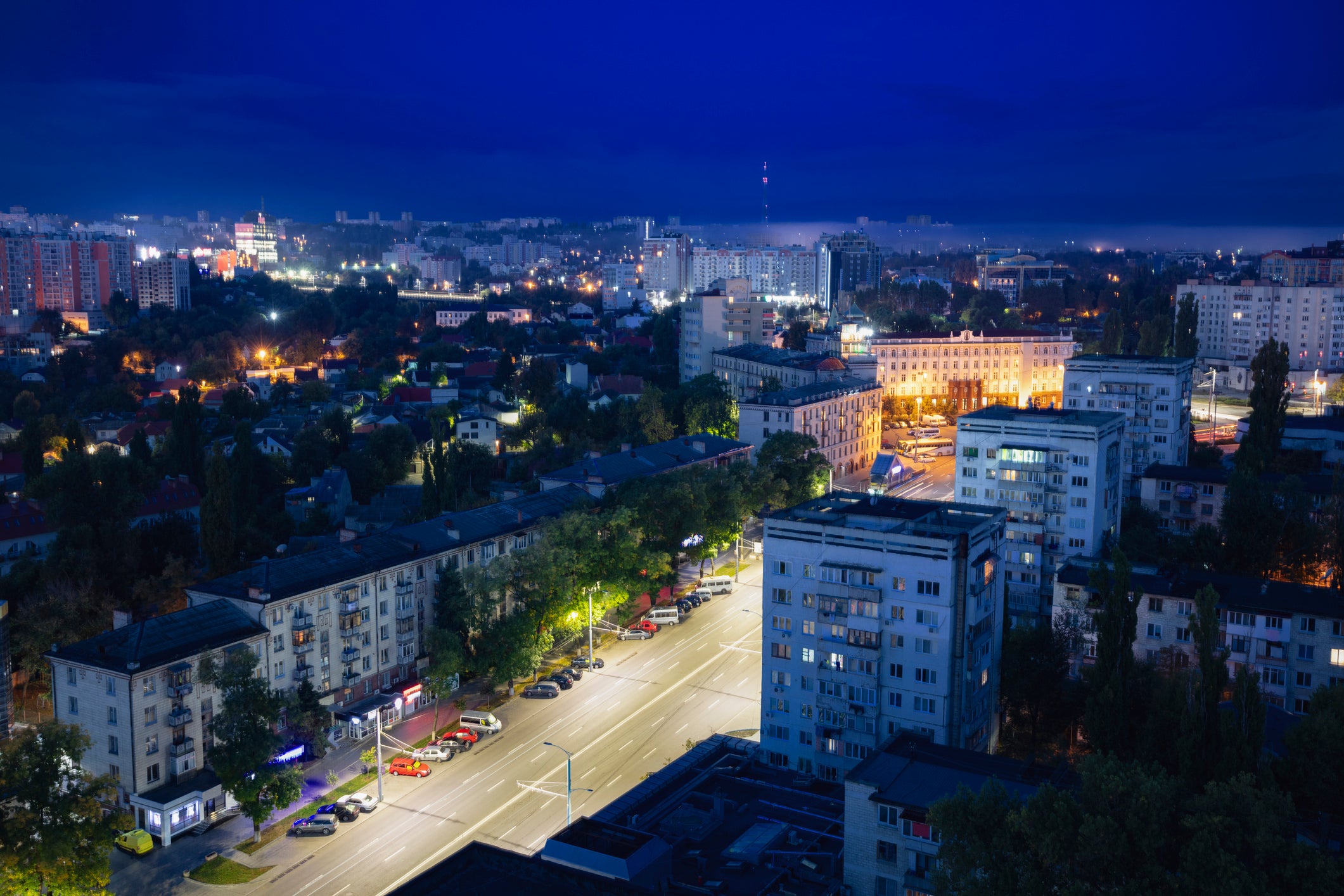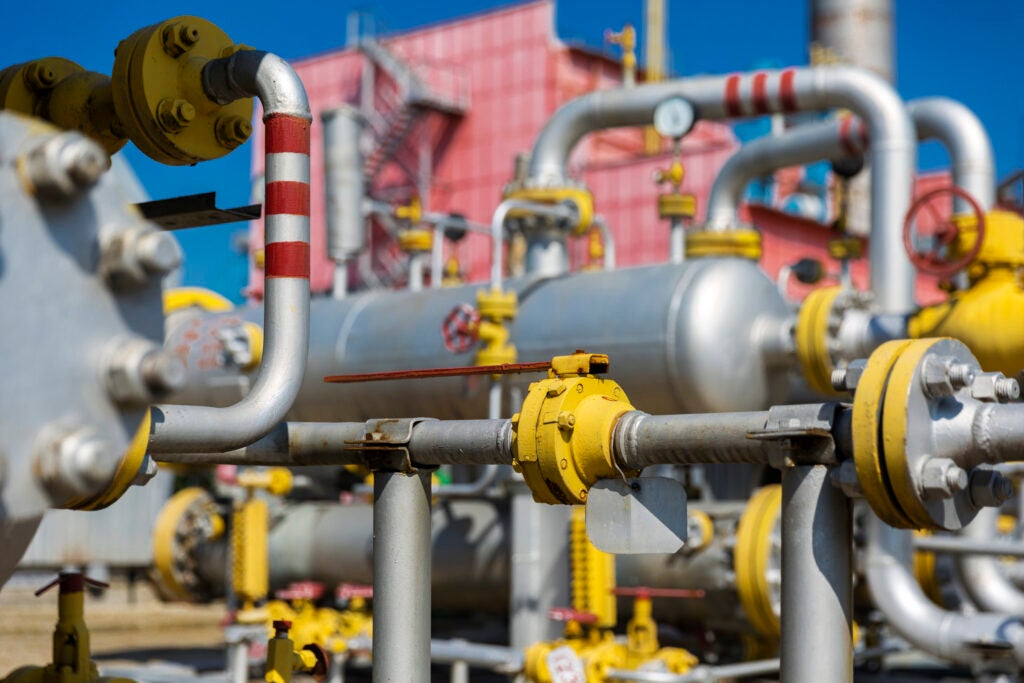
The Republic of Moldova faces rolling blackouts this winter. The country is already suffering an energy crisis and household energy tariffs are soaring. The situation for one of Europe’s poorest countries might still get worse, with the looming possibility of Russia’s Kremlin cutting off gas supplies completely, as Putin weaponises energy against the Moldovan pro-EU government.
In October, Ukraine had to cut its electricity exports to Moldova after Russian missile strikes targeted the country’s energy infrastructure. A few weeks later, Gazprom announced it would cut the daily gas supplied to Moldova by half of agreed volumes, to 5.7 million cubic metres a day. On 15 November, Moldovans faced blackouts across the country after Russia launched more missile strikes on Ukrainian energy infrastructure and one of the power lines transporting electricity from Ukraine to Moldova automatically disconnected as a result.
“Parts of Moldova are experiencing power outages as a result of Russia’s missiles hitting Ukrainian cities and vital infrastructure,” said Nicu Popescu, minister of foreign affairs and European integration, in a tweet during the outages. “Every bomb falling on Ukraine is also affecting Moldova and our people.”
Powering Moldova from disputed regions
Moldova is especially vulnerable to energy destabilisation because the country’s energy self-sufficiency is amongst the lowest in the world. The country, a former Soviet republic, has historically been one of the countries most reliant on Russia for its gas supply. On top of this, Moldova has been historically dependent on a power plant in the separatist region of Transnistria for electricity.
Transnistria lies in the east of Moldova between the Dniester River and Ukraine. A conflict between the independent Republic of Moldova and separatists, who were supported by the Russian Federation, resulted in the breakaway state Transnistria in 1992. While it is globally recognized as part of Moldova, Moldovan authorities have no de-facto control over the region. Russia has maintained a military presence in the area ever since.
According to the IEA, the internationally-recognised state of Moldova relies on the Transnistrian Cuciurgani-Moldavskaya GRES (MGRES) power plant for 80% of electricity consumption, while just 20% was produced in non-disputed areas of the country.

US Tariffs are shifting - will you react or anticipate?
Don’t let policy changes catch you off guard. Stay proactive with real-time data and expert analysis.
By GlobalDataAs Transnistria has a mostly Russian-speaking population and is backed by the Kremlin, Moldova’s previous prime minister has expressed fears that they would face a similar fate to Ukraine. The conflict has already spilled over in Moldova – in April, a series of explosions took place across Transnistria and in October, debris of a Russian missile shot down by Ukrainian defences landed in the Moldovan border village of Naslavcea.
On 1 September, Russia’s foreign minister Sergey Lavrov warned that any actions seen as endangering the Russian ‘peacekeepers’ in Transnistria would be considered an attack on Russia, raising tensions between the nations further. “Everyone should understand that any kind of actions that will raise a threat to the security of our servicemen will be considered in accordance with international law as an attack on the Russian Federation,” said Lavrov in a statement.
Russia supports Transnistria financially as well, with the energy sector playing a crucial role. Important parts of Moldova’s energy infrastructure were built in Transnistria, including the power plant, meaning the country must rely on Transnistria for most energy needs, and by proxy, on Russia. After the 1992 conflict, Transnistria stopped paying Russia for gas. The ‘free’ gas is resold to the Transnistrian power plant and a steel plant at low tariffs to fund half of the Transnistrian budget.
However, Gazprom has added the bill of Transnistria’s gas to Moldova’s already significant gas debt, which the company has increased since the country’s independence. According to Gazprom, the Moldovan debt was over $700 million in October last year, which the Moldovan government has said they will only acknowledge after a (currently delayed) audit. Transnistria is estimated to owe an additional $7 billion in unpaid gas bills.
Surviving winter in Moldova, without Russian gas
Current deliveries of 5.7 million cubic meters of gas a day should be enough to get Moldova through the coldest months in winter, says Sergiu Tofilat, a Moldovan financial and energy policy analyst. According to his calculations, Moldova has already decreased gas consumption by 35 to 40% by switching a power plant in Chișinău from gas to heavy fuel oil, alongside other measures approved by the government this summer. That means that in January, the peak consumption month, Moldova would need around 140 million cubic meters of gas, which comes down to 4.5 million cubic meters a day.

The issue is, however, that the gas supply is not just for Moldova, but also for Transnistria. The gas is now distributed with 3.4 million cubic meters for Moldova, and 2.3 million per day for Transnistria. While the population is just a fifth of the Moldovan population, the region normally consumes more gas annually than Moldova due to energy-intensive power and steel plants in the area.
“Transnistria can’t survive without gas, both from an energy and financial perspective. Their only chance to overcome this winter is to rely on [Moldova’s capital] Chișinău,” says Tofilat.
By reducing the overall gas supplies, Russia puts pressure on Moldova to divide its limited supply. President Maia Sandu made clear in October that the Moldovan government is willing to help Transnistria with gas, but only if they pay for it. It makes for a complicated political situation.
“Putin wouldn’t want to bear the responsibility for cutting off the gas supply to Transnistria completely, because they will face a humanitarian crisis,” explains Sergiu Tofilat. “Instead, he limits the supply and puts the responsibility of deciding how these volumes are split on the Chișinău government.
“If the Moldovan government were to decide that Transnistria doesn’t get gas if they don’t pay, it would give Putin the opportunity to say that [Transnistria’s declared capital] Tiraspol is freezing because the government disconnected them, and it would justify cutting the gas supply to Moldova completely.”
Russia has already cut off supplies to several European countries. This also wouldn’t be the first time that gas supplies to Moldova are disconnected: In 2006, Russia cut off gas to Moldova over a price dispute and in 2009, Russia halted gas flows through Ukraine which left over 50,000 people without gas supplies for several weeks. At the end of last year, Russia threatened multiple times to cut off supplies over the gas debt. Even if there is no gas from Russia, Sergiu Tofilat thinks the country should be able to manage with help from the EU and neighbouring countries.
“For the entire winter, we will need around 650 million cubic meters of gas. We already bought 150 million cubic meters,” says the energy analyst. “The European Bank for Reconstruction and Development is lending Moldova €300 million. On Thursday, the EU Commission provided another €250 million, of which €200 million is specifically for the emergency acquisitions of gas. So, on the gas side, we are covered.”
Preventing further energy poverty
According to Tofilat, issues around power security are cause for bigger concern. Moldova has two main power transmission lines, one from Romania through Transnistria to Moldova, and another from Ukraine to Moldova. With Ukrainian energy infrastructure under fire, Transnistria threatening to cut off electricity supplies, and limitations to alternative recourses, the issues are more complicated to solve.
Additionally, Moldova has limited payment capacity from consumers. According to the United Nations Development Programme, 60% of Moldovans live in energy poverty. In a recent visit to Romania, Maia Sandu told the Romanian Parliament that families are already spending around 75% of their income on energy.
Some cost-of-living support is already being offered to residents. The Moldovan government announced in August that it will subsidize the cost of firewood to make sure those relying on wood as the main source for heating will still have access despite soaring prices. The Romanian government agreed to sell electricity to Moldova at a capped price. Yet, more subsidies are needed to get vulnerable households through the energy crisis.
“The question is how we can provide sufficient subsidies to consumers to avoid arrears and disconnections from the grid,” says Tofilat.
But even if, in a worst-case scenario, Moldova faces rolling blackouts this winter, any situation will only be amplified in Transnistria. The energy crisis might just push the separatists to find a way to resolve conflicts between the regions as they are running out of options, thinks Tofilat.
He explains: “In the worst-case scenarios, Moldova will still get through this energy crisis. Transnistria, on the other hand, will go bankrupt within a few months. The current situation is not sustainable for them, and they understand that. They only have enough reserves to last two months. After those two months, they will have to either leave their homes or find a way to solve the problems together with Chișinău.”



